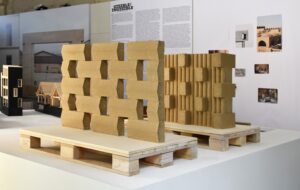|
An exhibition in Washington documents the freeing influence of landscape designers Wolfgang Oehme and James van Sweden on the carefully-manicured gardens of the US in the mid to late 20th century, but fails on occasion to capture the exuberant spirit of their work, says Nate Schulman We celebrate buildings far more than the spaces between them, so it’s gratifying to see pioneering landscape designers garner respect. The dazzling duo of Wolfgang Oehme and James van Sweden startled in the mid to late 20th century with their mixtures of perennials, grasses, trees and shrubs that worked across all the seasons. The positioning of gardens had a dramatic impact on their sites and shifted the norms of American lawns and landscapes, challenging the uptight standards of the day. They innovated with the private residential garden, replacing the suburban “showcase” front lawn with wilder, more informal ones. These efforts are now the focus of the largest monograph landscape architecture exhibition ever put on by the National Building Museum in Washington, DC. The exhibition builds on the success of Bold Romantic Gardens, the firm’s 1990 book that introduced it to the world. It is also a memorial to the two men, Oehme (1930-2011) and van Sweden (1935-2013). The projects shown range across four decades, with the exhibition itself divided into four: early projects; residential gardens; civic and commercial gardens; and legacy and stewardship. These separations generally accomplish their goal of highlighting the duo’s longevity and legacy – a difficult task given the hundreds of projects the curators had to choose from. After all, Oehme and van Sweden gardens were at ease across diverse settings and scales – as much at peace in residential neighbourhoods as grand civic spaces. All four sections provide vividly descriptive captions, with 52 contemporary and newly-commissioned photographs used to tell the tale. The show is primarily made up of these large-scale prints, showing the most idealised versions of the designers’ civic projects, even when the accompanying note mentions how years of neglect and diminished maintenance eventually harmed the plan. Photographs capture the gardens in one perfect place and time, but the actual gardens “unfold in space and time” as Oehme and van Sweden themselves wrote. That’s why the show works best in its concluding, sombre moments focusing on stewardship, when it provides the stark reminder that nine of the 21 gardens featured in Bold Romantic Gardens are now lost. Accompanying the photographs are documentary materials. Original planting plans illustrate “the evolution of the garden’s design”, since they so often morphed into something brasher once planting began. A selection of historic artworks (a Helen Frankenthaler painting, Henry Moore sculpture and 17th-century Dutch painting) diversify the content but seem a curious supplement, providing a rather limp and unconnected backdrop of influences that are unduly emphasised. Most comprehensively, a series of screens carry sections from an oral history by James van Sweden in 2009. As you walk into the space, the interview plays out loud, but the distracting background music makes van Sweden’s voice hard to hear. In describing the pair’s design goals, van Sweden once wrote of turning “their display of plants, paths, and ornaments into an adventure”, but the presentation of the show feels far from such exuberance. Just as the formerly wild and brash gardens, so overrun with thousands of plants, became surprisingly comfortable the more you saw them, the show, too, feels sedate – even safe. In the end, the revolution of this New American Garden has been televised. Read our interview from Icon 139 with pioneering Dutch landscape designer Piet Oudolf |
Words Nate Schulman
The New American Garden: The Landscape Architecture of Oehme, van Sweden
Images: Sara Cedar Miller; Andre Baronowski; Volkmar Wentzel; The Cultural Landscape Foundation |
|
|


















